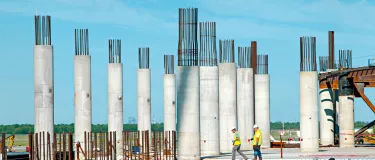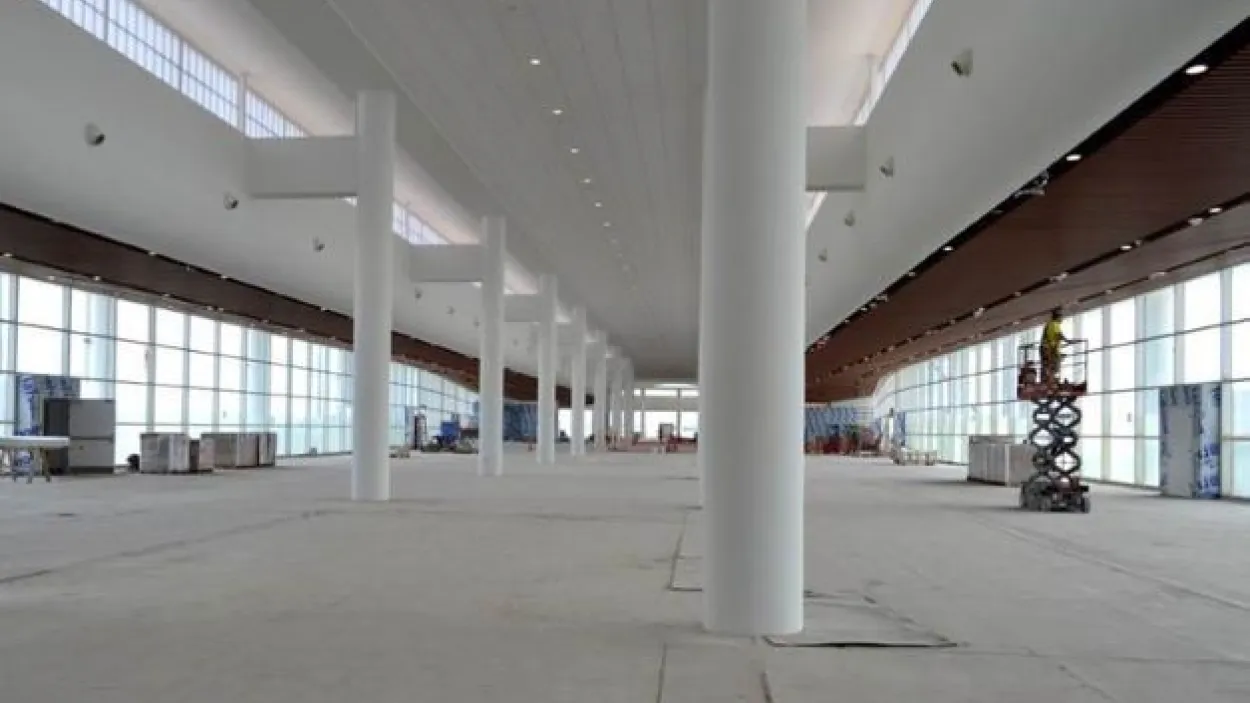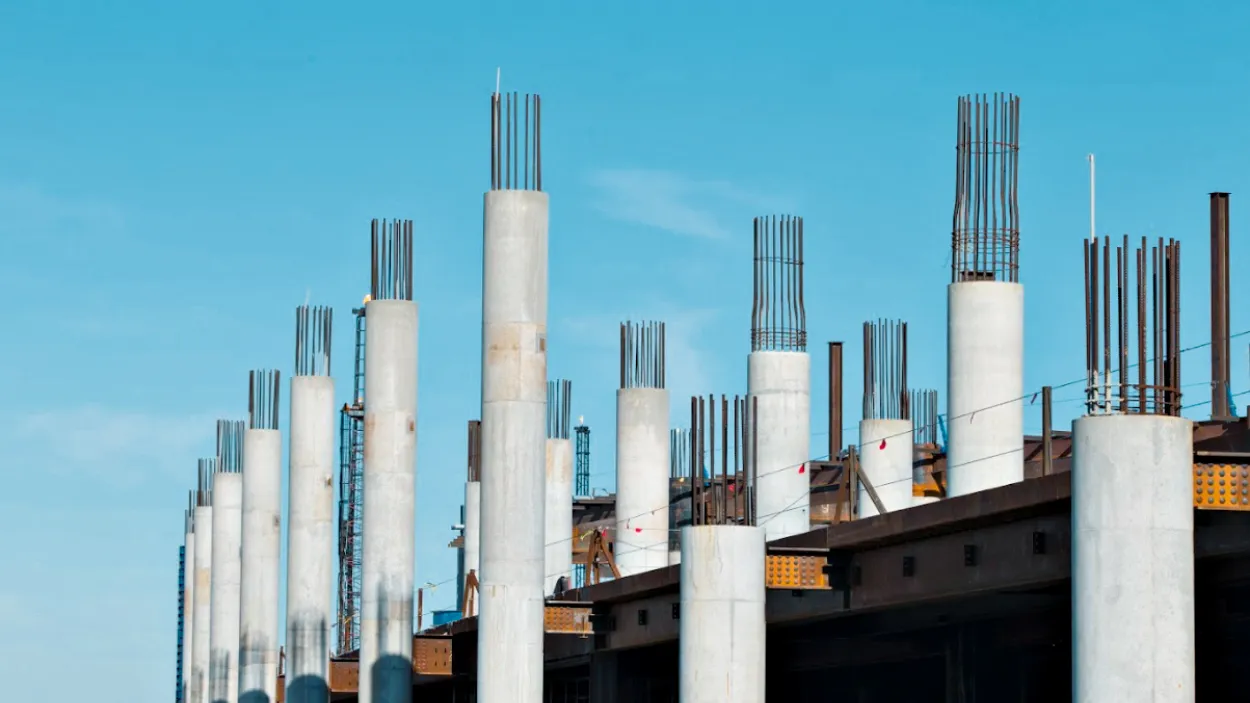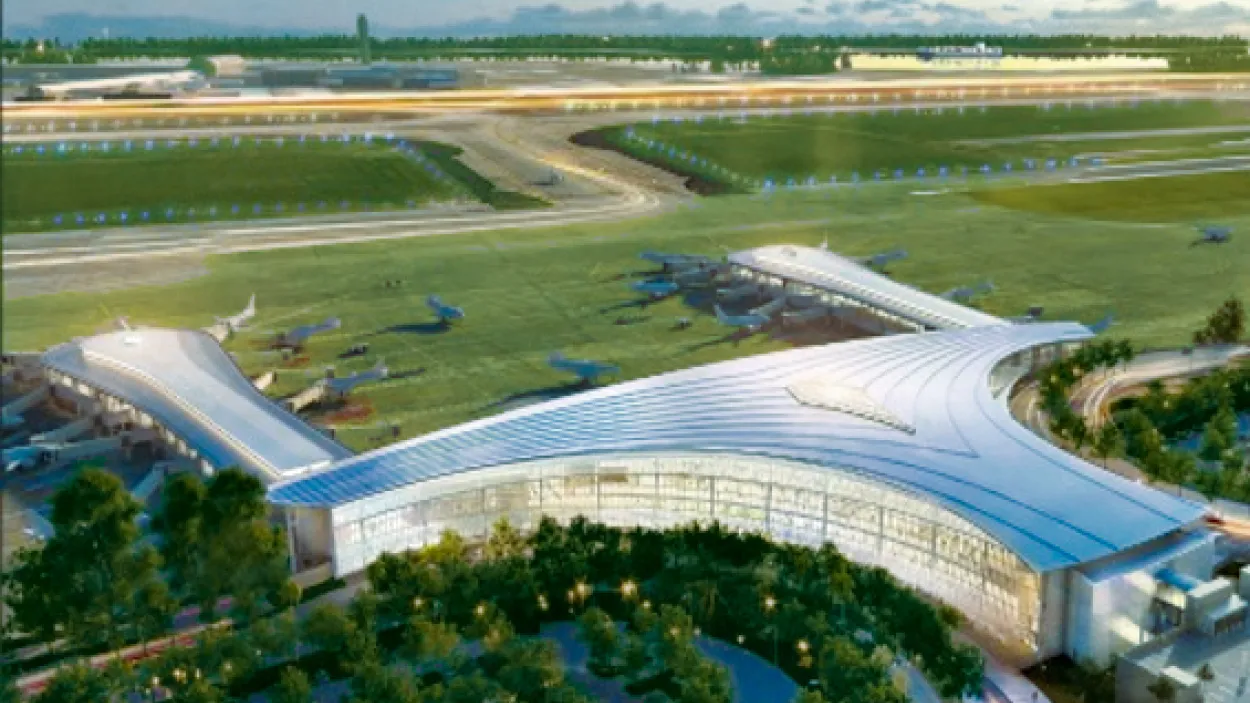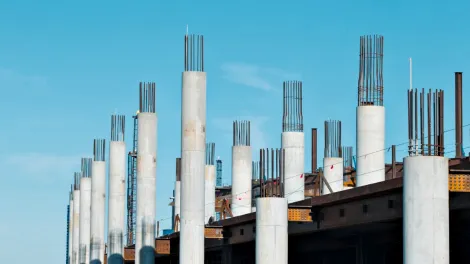Advanced Self-Consolidating at Louis Armstrong International Airport
A visionary project of the City of New Orleans, the new terminal at Louis Armstrong New Orleans International Airport showcases the vibrant spirit and distinct culture of the Big Easy. The $1 billion project is one of the most visible symbols of infrastructure rebuilding in the Gulf South region post-Katrina.
According to the design team, the terminal’s architectural form evokes the geography of the Delta region and the soft curves of the Mississippi River. The curved, T-shaped building forms a gentle arc on three sides, and a monumental roof rises toward the structure’s centerline where it crests over a large central skylight. Designed to allow long spans, the spherical-shaped roof is supported by massive concrete columns to reflect the region’s modern and upward trajectory.
The Challenge
Conceived by Pelli Clarke Pelli, the world-class design of the 972,000-square-foot replacement terminal features three concourses with 35 passenger gates, seamless connections between concourses, nearly 80,000 square feet of retail space, parking garages and a surface parking lot, and an enormous concrete apron that ties into existing runways.
Designed to allow long spans, the spherical-shaped roof is supported by massive concrete columns to reflect the region’s modern and upward trajectory. One of the biggest challenges in constructing the tall and complex columns was finding the ideal concrete mix that would perform on a variety of levels. The use of a conventional concrete was not an option for this application due to all the highly congested steel reinforcement, embeds and anchor bolts within the columns. In addition, project specifications required a high-quality class A exposed concrete finish, which would not be possible using a standard concrete mix.
The Solution
To meet the stringent performance criteria for this high-vertical application, the project team selected an advanced self-consolidating concrete (SCC), called Agileflow™ (formerly Agilia®). This highly fluid concrete places more quickly than standard concrete, flows easily through highly congested reinforcement and provides superior non-segregation properties for greater structural integrity. Other advantages of the SCC technology include increased strength, higher-quality finished surfaces and reduced production times and labor costs.
Primary considerations in developing the optimal concrete for the airport columns were flowability, viscosity, compressive strength, durability, and maximum temperature gain control. Key performance parameters included compressive strength of 7,000 psi at 28 days, maximum temperature of 95 degrees F, and spread of 28 to 31 inches.
“We design our Agileflow advanced SCC mixes to flow at higher capacities and to avoid separation in applications with high drop heights,” said BJ Eckholdt, quality control manager at Holcim, “With the concrete developed for the airport columns, we could easily take the spread to 31 inches, whereas most standard SCC mixes would fall apart at that mark.” To achieve specified performance goals, the SCC mix for the columns contained a high percentage of cementitious material to control heat gain.
The Results
Completed in May 2019, the new airport terminal is not only an example of outstanding design and stellar engineering, but also a tribute to all the construction trades in making the architectural vision a reality.
Construction of the 350 structural columns took about 12 months and required more than 6,500 cubic yards of the Agileflow concrete to complete. The specified compressive strength on this project was 7,000 psi at 28 days; however, the SCC mix consistently achieved strengths surpassing 11,000 psi. The self-consolidating properties of the advanced SCC product was a great solution to column production challenges and the surface finish allowed for the final field finish with minimal rubbing and patching—a huge benefit in terms of time and labor cost savings





